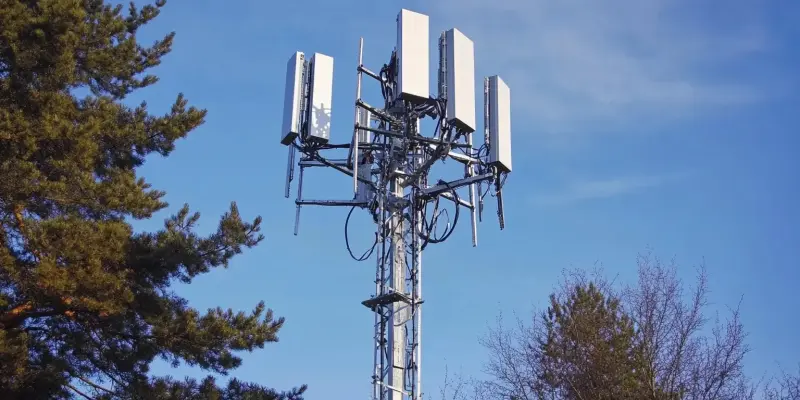As 5G technology marks its fifth anniversary, the competition among major U.S. carriers to extend their networks into rural areas has intensified significantly. AT&T, T-Mobile US, and Verizon have each employed distinct strategies to enhance their rural 5G coverage, driven largely by their available spectrum holdings and acquisition endeavors. By analyzing these approaches and the ensuing progress, it becomes evident how each carrier has navigated the challenges associated with serving less densely populated areas. From leveraging existing network projects to making substantial investments in new spectrum acquisitions, the carriers’ efforts mirror the complexity of the rural 5G landscape.
T-Mobile US: Leading the Rural 5G Charge
T-Mobile US has established itself as a leader in both urban and rural 5G coverage, thanks to the strategic utilization of its spectrum assets and savvy acquisition strategies. Early on, the carrier leveraged its 600 MHz spectrum to build a robust foundation for its rural network, ensuring broad coverage across less densely populated regions. The pivotal acquisition of Sprint further amplified T-Mobile’s capabilities, particularly through the addition of midband spectrum assets in the 2.5 GHz range. This midband spectrum, crucial for effective 5G deployment due to its balance of coverage and capacity, has been instrumental in bolstering T-Mobile’s rural 5G presence.
Moreover, T-Mobile’s commitment to rural expansion was not just a byproduct of technological opportunity but also a requirement tied to the Sprint merger agreement. The deal mandated T-Mobile to intensify its focus on rural areas, compelling the carrier to prioritize these regions. Furthermore, T-Mobile’s pending acquisition of US Cellular’s spectrum and assets could fortify its already strong rural 5G position. The potential deal includes the transfer of valuable spectrum resources, retail stores, and customer bases, which together offer a considerable advantage. States like Florida, Connecticut, Illinois, Delaware, and Georgia reflect T-Mobile’s early success, showcasing the carrier’s effective rural 5G strategy and its potential for continued growth.
AT&T: Leveraging FirstNet and Spectrum Holdings
AT&T has strategically leveraged its involvement with the FirstNet project to drive significant network upgrades, facilitating its rural 5G rollout across the United States. FirstNet, a dedicated network designed for first responders, has enabled AT&T to enhance its infrastructure across the country, including in underserved rural areas. This comprehensive approach has been integral to AT&T’s broader 5G strategy, allowing the carrier to deploy its advanced network capabilities in places where they are critically needed. By deploying 5G across its low-band spectrum and progressively enhancing its midband network, AT&T has been able to provide durable and expansive coverage.
The carrier’s dual strategy of leveraging both FirstNet and its low and midband spectrum assets has ensured that rural areas are not left behind in the 5G rollout. This approach, while addressing the urgent needs of first responders, also benefits the general population in these areas by providing improved connectivity. Key states showcasing AT&T’s rural 5G prowess include Texas, Florida, Alabama, Louisiana, and California. These regions exemplify the carrier’s effective deployment strategy, which not only expands 5G availability but also boosts the overall quality and reliability of service in these communities.
Verizon: Catching Up with C-Band and Acquisitions
Verizon faces significant challenges in catching up to its competitors regarding rural 5G availability, but it has devised a strategic plan focusing on future-ready spectrum investments and targeted acquisitions. Initially, Verizon deployed 5G using Dynamic Spectrum Sharing (DSS), a method that enables the simultaneous allocation of network resources between LTE and 5G services. While DSS allowed for a rapid rollout, it did not provide the same immediate boost in rural 5G presence as other strategies. Verizon then turned to acquisitions, purchasing small LTE-focused carriers in rural markets to enhance its network assets. However, these acquisitions did not instantly translate into improved rural 5G coverage.
A critical element of Verizon’s strategy involves substantial investments in C-Band spectrum, which offers a balance of coverage and capacity crucial for advanced 5G services. The deployment of C-Band in rural areas is still in the early stages, but the carrier is optimistic about its potential to transform its rural 5G footprint. Verizon’s top-performing states for rural 5G availability, including Ohio, Arkansas, Texas, New Jersey, and Delaware, underscore the gradual yet steady progress in expanding its network. This focus on the long-term benefits of C-Band spectrum, alongside ongoing acquisitions, reflects Verizon’s commitment to overcoming challenges and enhancing its rural 5G offerings.
The Impact of Spectrum Acquisitions
As 5G technology celebrates its fifth anniversary, the competition among major U.S. carriers to expand their networks into rural areas has ramped up significantly. AT&T, T-Mobile US, and Verizon have each adopted unique approaches to bolster their rural 5G coverage, driven largely by their specific spectrum holdings and acquisition strategies. These companies are not only leveraging existing network projects but also making substantial investments in new spectrum acquisitions to navigate the unique challenges of serving less densely populated regions. By examining their methodologies and the progress made, it’s clear how each carrier has tackled the complexities inherent in rural 5G deployment. Whether through extensive infrastructure upgrades or targeted spectrum purchases, the efforts of these carriers highlight the intricacies and competitive nature of extending 5G technology into rural America. The ongoing race to connect rural areas underscores the importance of strategic planning and investment in meeting the growing demand for high-speed connectivity.

